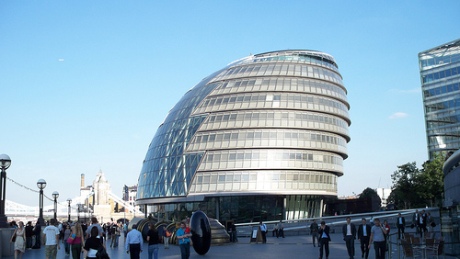London Hotels Insight provides up-to-date, independent advice for your perfect stay in London. We research guest feedback, meet management and identify hotels at the top of their game.
London’s drive for accessible hotels.

The striking City Hall building is the home of the GLA - the authority that has developed a plan to boost the number of accessible hotel rooms (image credit below)
Awareness has recently grown on the need to improve accessibility within the hospitality industry. But it’s also becoming increasingly apparent that London has a growing gap between supply and demand.
In this first of two articles on accessible hotels in the capital, we take a look at the Mayor of London’s plans for a more accessible future. In the second article we will go on to list some of London’s best accessible hotels.
The Mayor’s current London Plan shows an awareness of the growing need to improve the provision of access across the city. The ‘Visitors London’ section stipulates that all London boroughs should “support an increase in the quality and quantity of fully wheelchair-accessible accommodation”.
Some key areas for action are highlighted in the Plan.
In the section entitled ‘London’s Living Spaces and Places’, the document states the importance of “ensuring that families with small children, older people and disabled people can move around.”
Within a broader context, the Plan says local authorities and organisations in London should “seek to achieve 40,000 net additional hotel bedrooms by 2031, of which at least 10 per cent should be wheelchair accessible.”
To give further information on this and related policies, the Greater London Authority recently commissioned a report on ‘Accessible Hotels in London’.
The study behind this report was carried out by the Grant Thornton professional practice and published in March 2010. The original report can be downloaded from the official Greater London Authority website.
Defining an accessible room as “one which minimises barriers to use for as many people as possible”, the report stresses that disabled access should not only refer to access by people in wheelchairs but should in fact cover the whole spectrum of disabilities. This is a key distinction.
The report found a wide gap between supply and demand, concluding that “potential demand for accessible rooms in 2010 would be around 4% of the total rooms available, if there was an appropriate level of supply available.”
The current percentage of accessible hotel rooms in London is only 2% of the total hotel accommodation available. Demand is also set to increase to 7.5% between now and 2031, with an ageing population and greater disabled access to London’s transport network cited as key factors.
The report goes on to propose that the revised London Plan’s aim that 10% of all new hotel rooms should be accessible may not be enough: this would only raise available accessible rooms to 4.5% (roughly 6,000 rooms) by 2031. This figure would still be significantly below the projected demand.
In conclusion, the report says “there is also little information available to the public about where there are available rooms.” We will try to rectify this with our follow-up article on the best accessible hotel rooms in London.
In any event, London’s budding hospitality entrepreneurs should note that accessible rooms potentially offer a massive business opportunity.
Get the best-value London hotel deal from 30+ booking sites in 1 click
Photo credits: johnlew123’s photostream.
Previous post: A new Mexican wave sweeps through London.
Next post: The best accessible London hotel rooms.































Comments on this entry are closed.